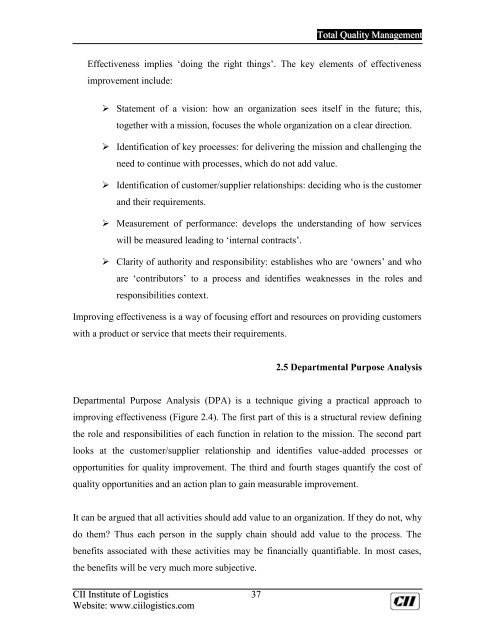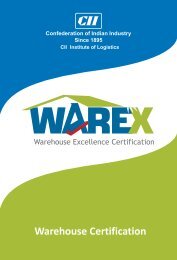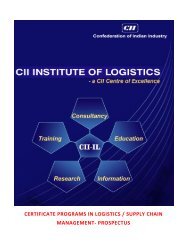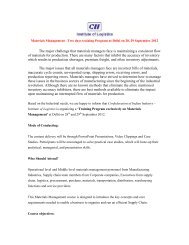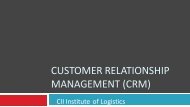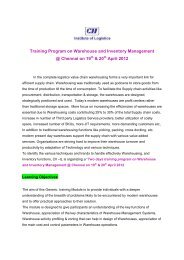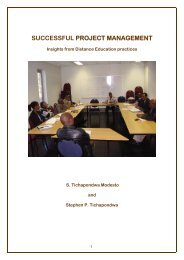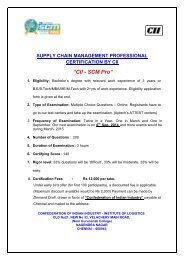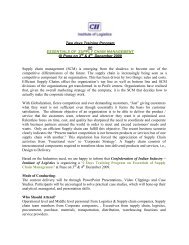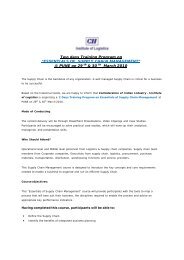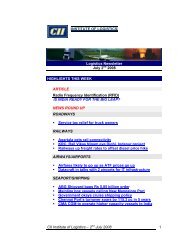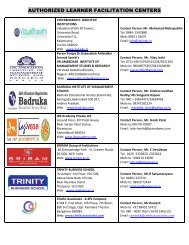Total Quality Management - CII Institute of Logistics
Total Quality Management - CII Institute of Logistics
Total Quality Management - CII Institute of Logistics
Create successful ePaper yourself
Turn your PDF publications into a flip-book with our unique Google optimized e-Paper software.
<strong>Total</strong> <strong>Quality</strong> <strong>Management</strong><br />
Effectiveness implies ‘doing the right things’. The key elements <strong>of</strong> effectiveness<br />
improvement include:<br />
Statement <strong>of</strong> a vision: how an organization sees itself in the future; this,<br />
together with a mission, focuses the whole organization on a clear direction.<br />
Identification <strong>of</strong> key processes: for delivering the mission and challenging the<br />
need to continue with processes, which do not add value.<br />
Identification <strong>of</strong> customer/supplier relationships: deciding who is the customer<br />
and their requirements.<br />
Measurement <strong>of</strong> performance: develops the understanding <strong>of</strong> how services<br />
will be measured leading to ‘internal contracts’.<br />
Clarity <strong>of</strong> authority and responsibility: establishes who are ‘owners’ and who<br />
are ‘contributors’ to a process and identifies weaknesses in the roles and<br />
responsibilities context.<br />
Improving effectiveness is a way <strong>of</strong> focusing effort and resources on providing customers<br />
with a product or service that meets their requirements.<br />
2.5 Departmental Purpose Analysis<br />
Departmental Purpose Analysis (DPA) is a technique giving a practical approach to<br />
improving effectiveness (Figure 2.4). The first part <strong>of</strong> this is a structural review defining<br />
the role and responsibilities <strong>of</strong> each function in relation to the mission. The second part<br />
looks at the customer/supplier relationship and identifies value-added processes or<br />
opportunities for quality improvement. The third and fourth stages quantify the cost <strong>of</strong><br />
quality opportunities and an action plan to gain measurable improvement.<br />
It can be argued that all activities should add value to an organization. If they do not, why<br />
do them? Thus each person in the supply chain should add value to the process. The<br />
benefits associated with these activities may be financially quantifiable. In most cases,<br />
the benefits will be very much more subjective.<br />
<strong>CII</strong> <strong>Institute</strong> <strong>of</strong> <strong>Logistics</strong> 37<br />
Website: www.ciilogistics.com


